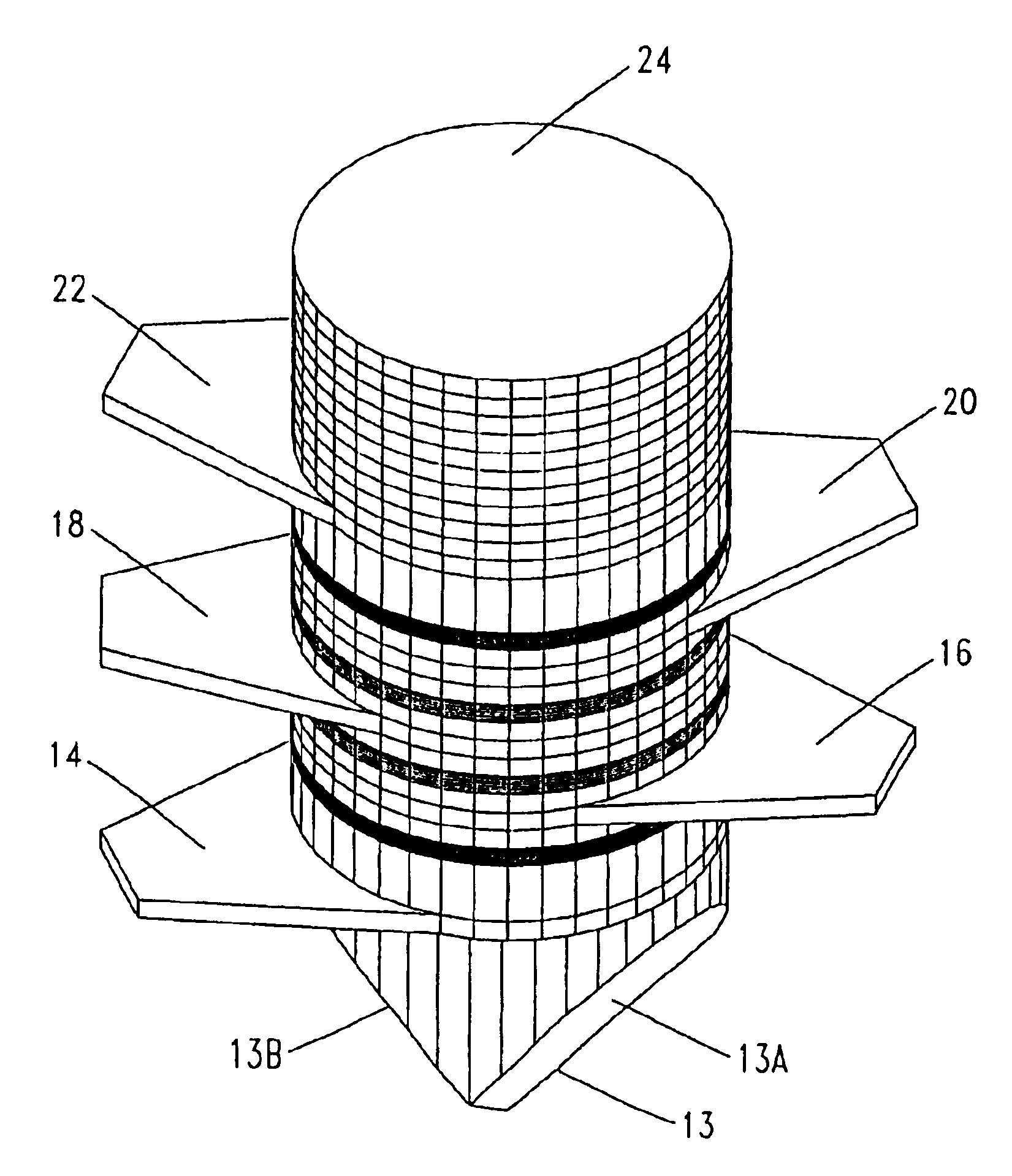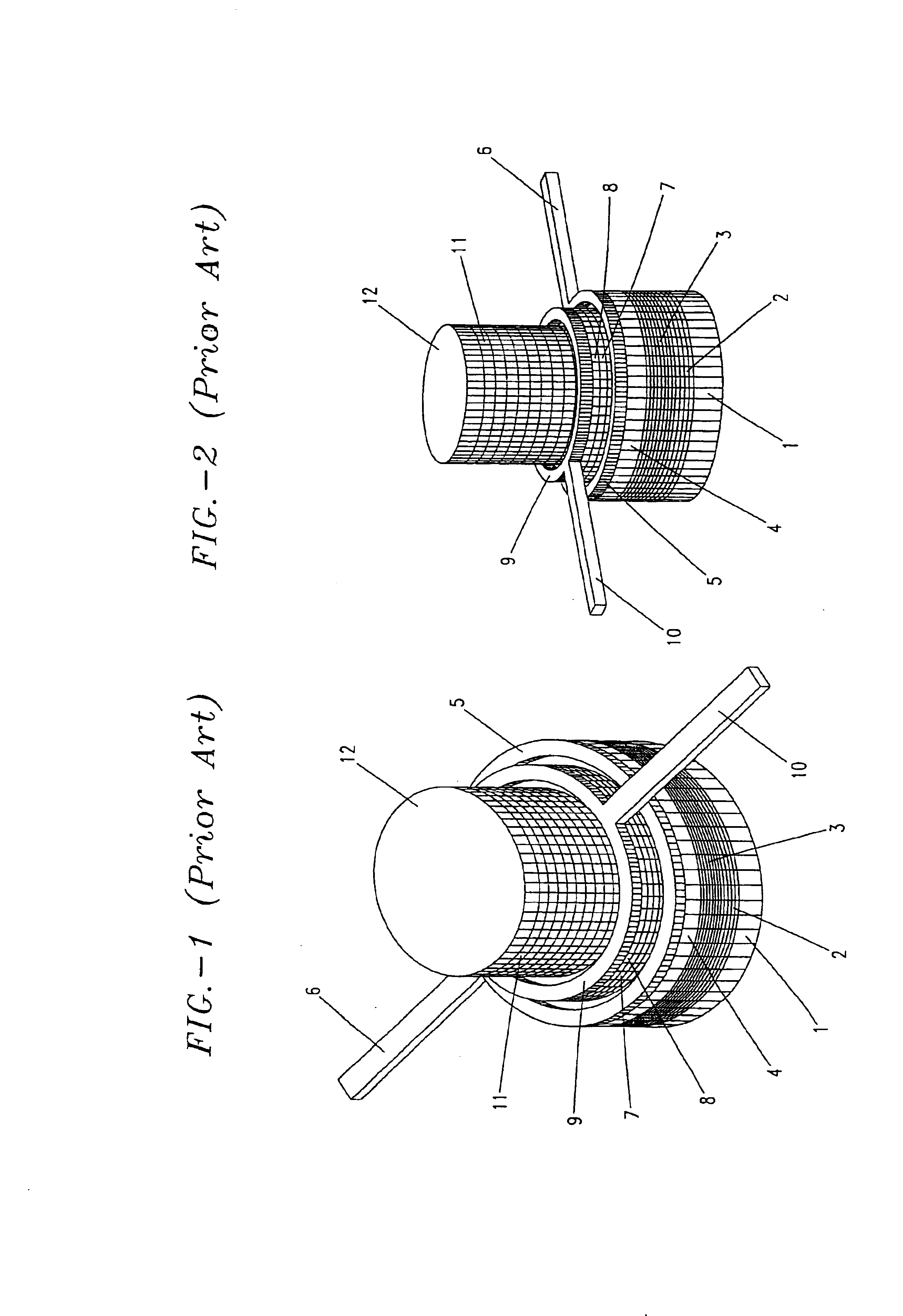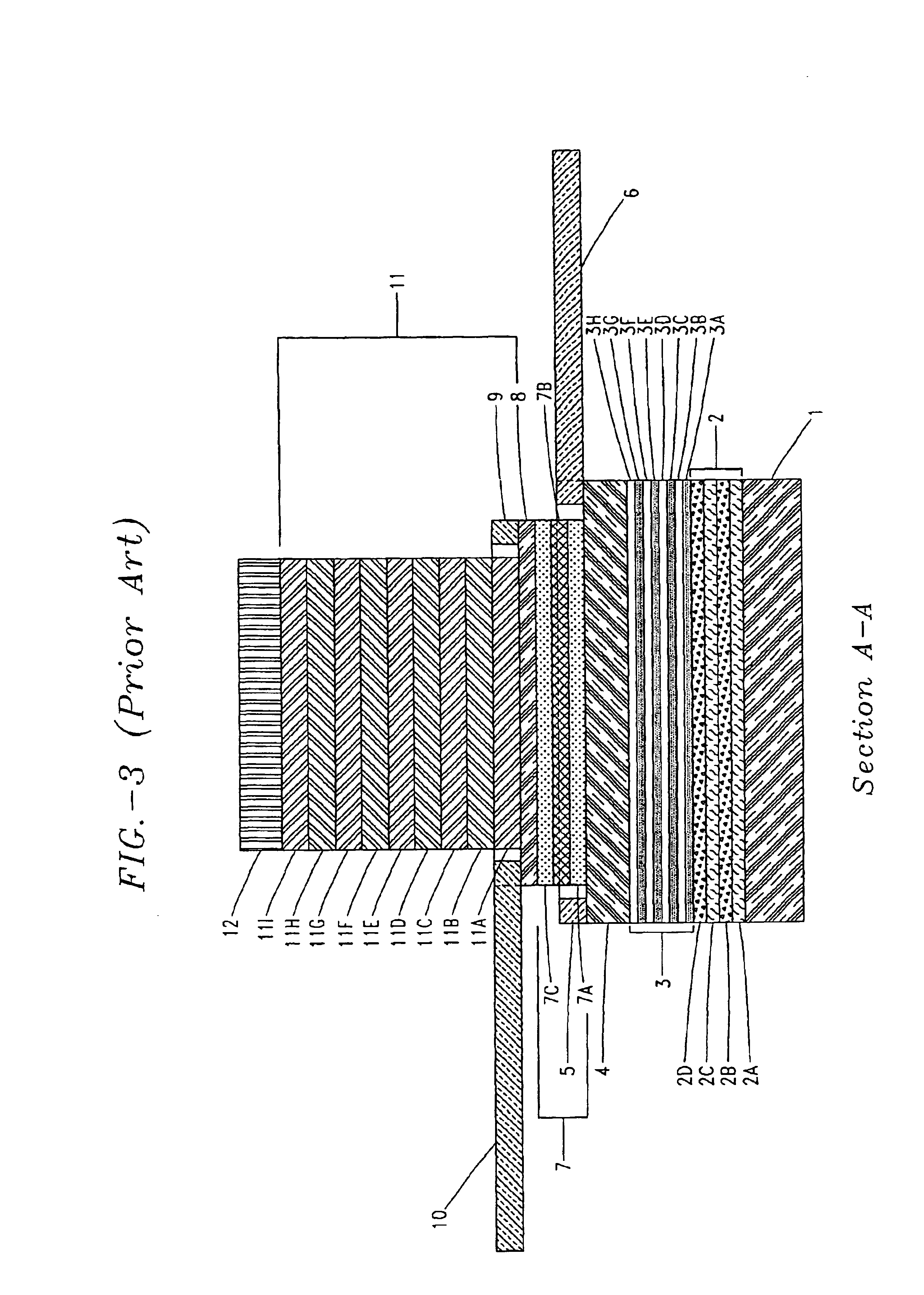Vertical cavity surface emitting laser that uses intracavity degenerate four-wave mixing to produce phase-conjugated and distortion free collimated laser light
a laser and vertical cavity technology, applied in the direction of laser optical resonator construction, laser details, laser output parameters control, etc., can solve the problems of poor coherence properties of recombination radiation emissions produced by prior-art vcsels, and the far from ideal recombination produced optical radiation emitted by current vcsels, so as to increase the laser emission output. the effect of gain
- Summary
- Abstract
- Description
- Claims
- Application Information
AI Technical Summary
Benefits of technology
Problems solved by technology
Method used
Image
Examples
Embodiment Construction
[0171]In order to better understand the differences between the PCVCSEL design sign and currently used prior-art VCSEL designs, examples of prior-art VCSEL design are presented in FIGS. 1 and 2 as 3D as isometric top side-view drawings, which illustrate a VCSEL technology that uses (e-h) “electron / hole” recombination radiation to urge the production of laser light emissions having a wavelength range between “200” to “850” nanometers.
[0172]Furthermore, as illustrated in FIG. 3, an “A—A” cross-section of an prior-art VCSEL design displays different extrinsic semiconductor layers as various horizontally deposited material levels, which are built-up layer upon layer using existing (MBE) “Molecular Beam Epitaxy” or (MOVPE) “Metal-Organic Vapor-Phase Epitaxy” manufacturing methods.
[0173]In addition, currently used prior-art VCSEL devices typically have a metallic supporting substrate, which is used as a back-reflector mirror, while providing a base-structure for the MBE and / or MOVPE growt...
PUM
 Login to View More
Login to View More Abstract
Description
Claims
Application Information
 Login to View More
Login to View More - R&D
- Intellectual Property
- Life Sciences
- Materials
- Tech Scout
- Unparalleled Data Quality
- Higher Quality Content
- 60% Fewer Hallucinations
Browse by: Latest US Patents, China's latest patents, Technical Efficacy Thesaurus, Application Domain, Technology Topic, Popular Technical Reports.
© 2025 PatSnap. All rights reserved.Legal|Privacy policy|Modern Slavery Act Transparency Statement|Sitemap|About US| Contact US: help@patsnap.com



